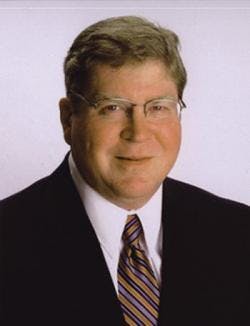Consumers could be screwed in 2021. Condensing furnaces are expensive, and the retrofit could be problematical.
— Bob Mader
Now, DOE is proposing that all gas furnaces be 92% AFUE or higher by 2021. Last month I attended a contractor group’s legislative conference in Washington where the contractors told Congressmen that DOE had apparently come up with this gem by consulting with academics and think tanks, but not with anyone who has manufactured or installed a furnace.
DOE consulted with academics, but not with anyone who has manufactured or installed a furnace.
Consumers could be screwed in 2021. Condensing furnaces are expensive and the retrofit could be problematical. Faced with an unaffordable choice, homeowners may opt to jerry-rig an unsafe gas furnace, install an electric furnace or buy a kerosene heater. The American Gas Association and the Gas Technology Institute project that higher costs for heating by electric resistance will increase energy costs by $44.9 million a year and increase carbon emissions by 348,000 tons per year.
The biggest problem is that condensing furnaces could not be vented through a sidewall in multi-family, townhouse or row house dwellings. Imagine that the furnace is in an inside dwelling in a row of attached houses. What’s your route to the outside wall? “Oh, it’s easy,” proponents say, “just use such-and-such venting products and you don’t need to vent the furnace out the sidewall.” That still orphans the water heater, which will no longer vent properly.
Secondly, a condensing furnace, by definition, condenses. You need a drain. How many drains do you typically find in an equipment closet in
a townhouse?
Will this new condensing furnace fit into the original mechanical space? Would a heat pump fit the space?
A condensing furnace, by definition, condenses. You need a drain. How many drains do you typically find in an equipment closet in a townhouse?
In a blog post, regulation proponent Andrew deLaski, executive director, Appliance Standards Awareness Project, noted, “The agency’s new analysis is substantially revised to address those critics’ concerns and now estimates that about 10% of furnace purchasers would switch to electric heat, primarily heat pumps, as a result of the standard. Most fuel switching would likely occur in those regions of the country where heat pumps are a cost-competitive option compared to gas heating.”
If a heat pump were that attractive economically, one would probably already be installed in the home. If either a gas furnace or heat pump option won’t work, what’s left? A conversion to a VRF system? How much would that cost?
Congress has heard our concerns and there’s legislation pending in both the House Subcommittee on Energy and Power and the Senate Energy and Natural Resources Committee to block the proposed rules. In testimony before the Senate, Steve Nadel, executive director of the American Council for an Energy Efficient Economy, gave one of the worst reasons for pushing the regulation through.
“S.1029 would prevent DOE from issuing a final rule and instead would institute an advisory group process that would extend at least a couple of years from the date of enactment,” Nadel said. “S.1029 would override the terms of the settlement that called for a final rule by April 2016, making it less likely that parties would agree to settlements in the future (why settle if a party to the agreement then runs to Congress to change the settlement?)”
I know Steve Nadel. I like Steve Nadel; he’s a smart guy, but he’s wrong on this. Pushing an impractical regulation through just because the clock is ticking won’t achieve the desired result. We can save more money and energy, but this isn’t the way to do it.

